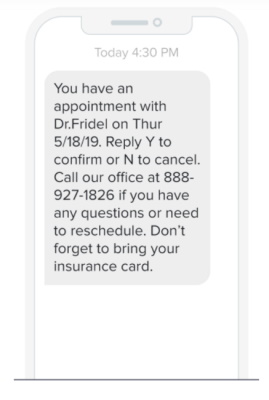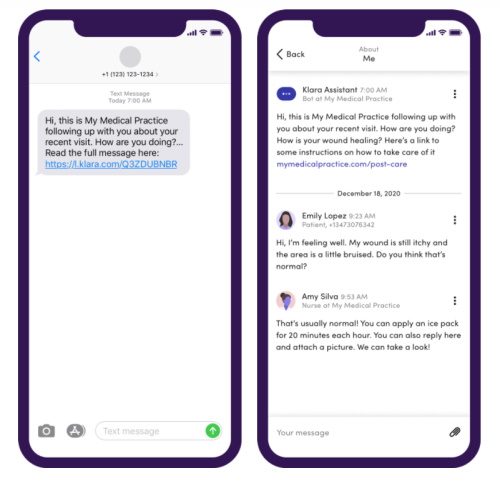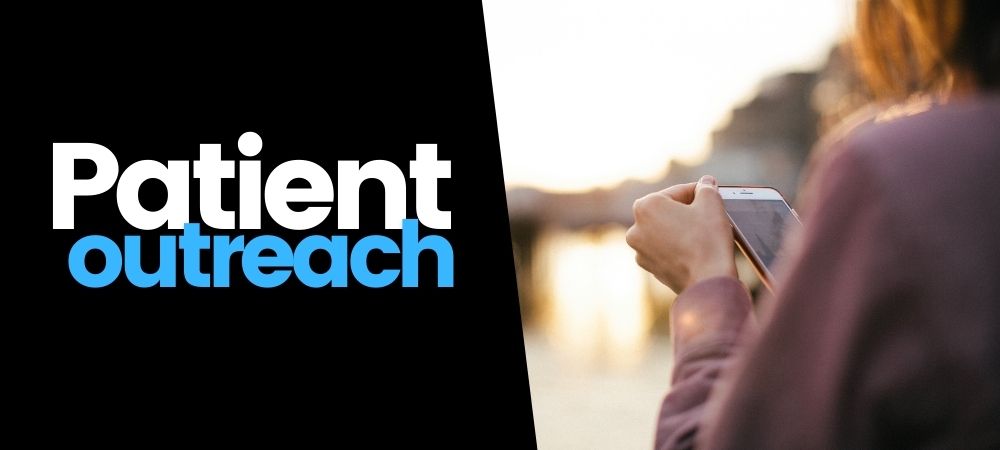Developing effective patient outreach strategies means connecting with patients—not only when they come in to receive treatment but also when they need to be reminded to keep appointments, get information about their treatment plans, or be prompted to pay their bills.
This is particularly important today as the COVID-19 pandemic has caused many people to miss preventative care visits. According to findings released in May 2020 by the Epic Health Research Network, preventative cancer screenings dropped between 86% to 94% across the U.S. in 2020 compared with the same weeks from 2017 to 2019.
Likewise, research shared by the CDC indicates an estimated 41% of U.S. adults delayed or avoided medical care in 2020, including 12% who avoided urgent or emergency care.
Practicing effective patient outreach strategies can help reverse this trend. Research shows having effective patient outreach strategies allows a healthcare organization to:
- Increase patient satisfaction
- Improve patient health outcomes
- Expand the patient populations a healthcare organization can support
In the past, manual patient outreach efforts could only effectively communicate with a limited number of patients. Today, however, advances in automation and analytics enable healthcare organizations to better understand multiple patient populations and reach out to them.
Let’s take a closer look at patient outreach and examine the practices that offer the best benefits for your healthcare organizations and the patients you serve.
What is patient outreach?
Patient outreach involves any form of communication used to keep patients engaged in their care. This includes sending texts to patients who are overdue for appointments, calling patients to talk about their plan of care, or emailing patients after a visit to request feedback about their experience.

Today, patients have many communication options, as well as multiple distractions that keep them from focusing on their healthcare. Developing an effective patient outreach strategy means optimizing texts, emails, phone calls, and more to keep patients engaged in and educated about their care.
Benefits of creating better patient outreach strategies
Healthcare providers that focus on communicating with their patients enjoy many benefits, including:
Retaining and expanding their patient population
Automating patient outreach methods makes it easier for you to stay in touch with your patients. Patients who receive texts reminding them to make or keep appointments will be more likely to stay in touch and develop greater loyalty to the practice.
In addition, automating patient outreach messages allows you to reach a greater number of prospective patients. Being able to customize those messages with more personalized language also increases the likelihood that newcomers will become regular patients.
Providing better targeted care
Patients—like all customers—need to be convinced that a healthcare practice can provide them with the services and care they need. A focused patient outreach strategy identifies population groups that require specific types of aid, such as patients with heart disease, diabetes, depression, enabling you to provide personalized care.
Keeping these patients informed of the required screenings, vaccinations, and other preventive care visits they need helps them become more engaged in maintaining their health. Likewise, providing educational resources about their conditions shows how invested your practice is in their health.
Enhancing the overall health of their communities
Focusing on community members that need regular visits to a healthcare provider and providing educational resources to prevent or monitor potentially harmful conditions leads to a population more capable of looking after its own health needs. This elevates the overall wellness of a community and keeps healthcare costs more manageable.
5 vital patient outreach practices
How can healthcare clinics and organizations refine their current patient outreach strategies and maximize their impact on their patients and the overall community?
By using the following best practices:
1. Integrate patient data from multiple sources
Data analytics and a HIPAA-compliant customer relationship management (CRM) platform provide a clearer picture of yourhealthcare organization’s patients by integrating patient data from multiple sources, including:
- Electronic health records (EHR)
- Call center recording
- Patient satisfaction surveys and scores
Using a reliable, HIPAA-compliant CRM to weave this data together, your practice can build 360-degree patient profiles, which is crucial for determining patient risk factors and the type of care they need.
2. Identify key populations in need of medical service and education
Once patient data is integrated and analyzed, you can develop better comprehensive care plans to meet the needs of each patient. Start by identifying key populations based on:
- Age
- Demographics
- Hereditary diseases
- Diagnoses
- Office visits
- Social determinants of health (SDOH)
This helps spot groups of patients with common risk factors. For instance, identifying patients with heart disease who have neglected regular checkups in the past 90 days enables providers to focus on the segment and determine the best ways to reach out to them.
Likewise, identifying patients with a high risk for certain diseases based on genetics, age, or social determinants allows providers to know where to focus educational efforts.
3. Take advantage of automation to reach out to patients
Advances in automation let providers communicate their messages at scale without sacrificing a personal touch. Patients can receive automated appointment reminders through text, emails, and calls about screenings, vaccinations, wellness visits, and other preventative care needed to keep them healthy.
The messages can be personalized to each patient and address specific conditions.
Sending follow-up texts and educational resources to help patients manage their condition is also effective for maintaining rapport after an appointment.

And since automated technology relieves providers of many administrative burdens, the staff can more easily reach out to patients who need the type of in-depth communication an automated phone call can’t provide. This leaves patients feeling valued, improving their health outcomes, and enhancing a clinic’s reputation.
4. Reach out to new patients
An effective patient outreach staff doesn’t just communicate with patients already enrolled in a healthcare plan. Your outreach staff should also include an external outreach staff that contacts people not yet enrolled in a health plan, enabling your practice to expand its patient roster.
5. Fine-tune your patient outreach efforts
Patient outreach strategies need to regularly adapt to new healthcare regulations. Keep informed of state or federal regulations and communicate any changes to your outreach staff.
Automated technology also helps healthcare providers monitor and fine-tune patient outreach strategies in real-time. Study automated dashboards to assess the performance of current outreach campaigns. Focus on patient response rates and current concerns to see if current efforts need to be changed to optimize their performance.
Outreach strategies need regular tracking and analysis to stay effective, so take advantage of the analytics reports your CRM provides.








![[Fintech Week Episode 2] Scaling Crypto Businesses Faster in 2023 3 Scaling Crypto Businesses Faster in 2022](https://www.leadsquared.com/wp-content/uploads/2022/03/Artboard-8-80x80.png)
